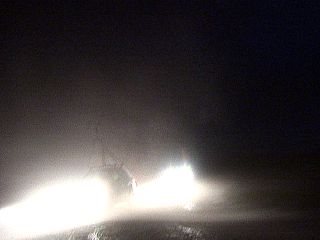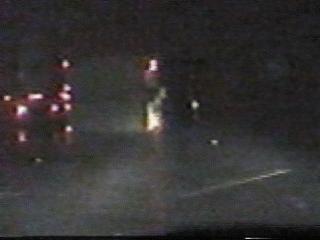cdcollura
EF5
Good day all,
I chased at night several times, even hurricanes ... But for the sake of this thread, I'll stick to thunderstorms / tornadoes.
------------
Warren - Excellent opinions, many of which I second ... And "highly do not recommend" storm chasing (any storm chasing) at night.
------------
In my own opinion, chasing at night opens up a whole different aspect of both "the experience" and risks involved.
The risks are very obvious, as the lack of adequate light impairs visibility (which may already be imaired even in the daytime to begin with - from precipitation). Seeing "important" / dangerous areas of the storm is much more difficult at night.
Having data makes night chasing safer ... The big word here is "SAFER" and not "SAFE".
Last year, on May 29, 2008, with all the data we can shake a stick at ... I was chasing the Tipton-Glen Elder-Jewell storm in Kansas, which produced multiple tornadoes, including a large EF-3 wedge (Jewell) by night-fall.
I continually had the storm tracked on radar after dark, knowing at all times where the meso was, and my position relative to it. I was at least 5 miles away from the "danger zone" - Or so I thought.

Above: The "core" of an anticyclonic EF-0 - Those vehicles are almost "up on 2 wheels"!
A small, anticyclonic tornado, developing on the opposite side of the supercell RFD, spun up in a field, then northward right OVER myself and a few other vehicles with the TWISTEX group. I saw the funnel (barely) aloft, but could not make it out to well.
Radar just showed the activity (main meso) far to our NW ... We were OK, and a window was shattered, but only shaken - I took this as a warning / lesson on chasing at night (something can always bite you) ... Had this been day, we clearly would have seen the small tornado and taken evasive action (radar and data did not help at all).

Full video of above available HERE.
Above: Another harrowing experience chasing at night, actually 5:30 - 6:00 AM in South Florida in March of 1998 ... F1 Tornado (confirmed) flips over a semi-trailer in front of me ... look ma - No data!
I chased at night several times, even hurricanes ... But for the sake of this thread, I'll stick to thunderstorms / tornadoes.
------------
Warren - Excellent opinions, many of which I second ... And "highly do not recommend" storm chasing (any storm chasing) at night.
------------
In my own opinion, chasing at night opens up a whole different aspect of both "the experience" and risks involved.
The risks are very obvious, as the lack of adequate light impairs visibility (which may already be imaired even in the daytime to begin with - from precipitation). Seeing "important" / dangerous areas of the storm is much more difficult at night.
Having data makes night chasing safer ... The big word here is "SAFER" and not "SAFE".
Last year, on May 29, 2008, with all the data we can shake a stick at ... I was chasing the Tipton-Glen Elder-Jewell storm in Kansas, which produced multiple tornadoes, including a large EF-3 wedge (Jewell) by night-fall.
I continually had the storm tracked on radar after dark, knowing at all times where the meso was, and my position relative to it. I was at least 5 miles away from the "danger zone" - Or so I thought.

Above: The "core" of an anticyclonic EF-0 - Those vehicles are almost "up on 2 wheels"!
A small, anticyclonic tornado, developing on the opposite side of the supercell RFD, spun up in a field, then northward right OVER myself and a few other vehicles with the TWISTEX group. I saw the funnel (barely) aloft, but could not make it out to well.
Radar just showed the activity (main meso) far to our NW ... We were OK, and a window was shattered, but only shaken - I took this as a warning / lesson on chasing at night (something can always bite you) ... Had this been day, we clearly would have seen the small tornado and taken evasive action (radar and data did not help at all).

Full video of above available HERE.
Above: Another harrowing experience chasing at night, actually 5:30 - 6:00 AM in South Florida in March of 1998 ... F1 Tornado (confirmed) flips over a semi-trailer in front of me ... look ma - No data!
Last edited by a moderator:

